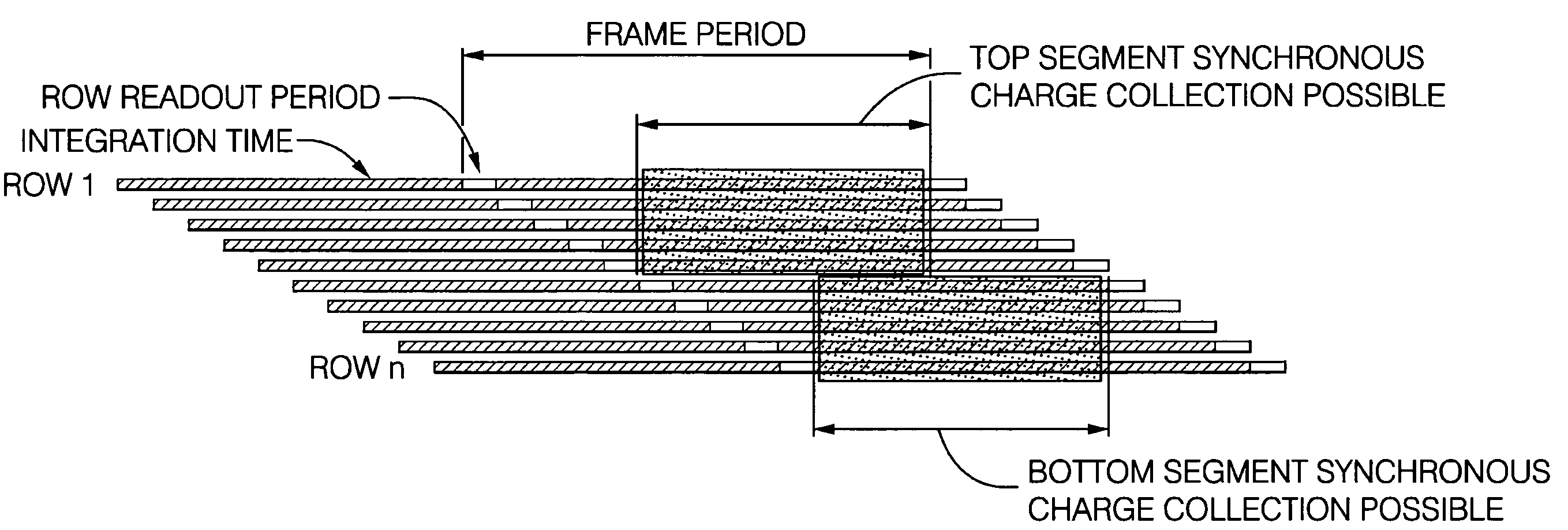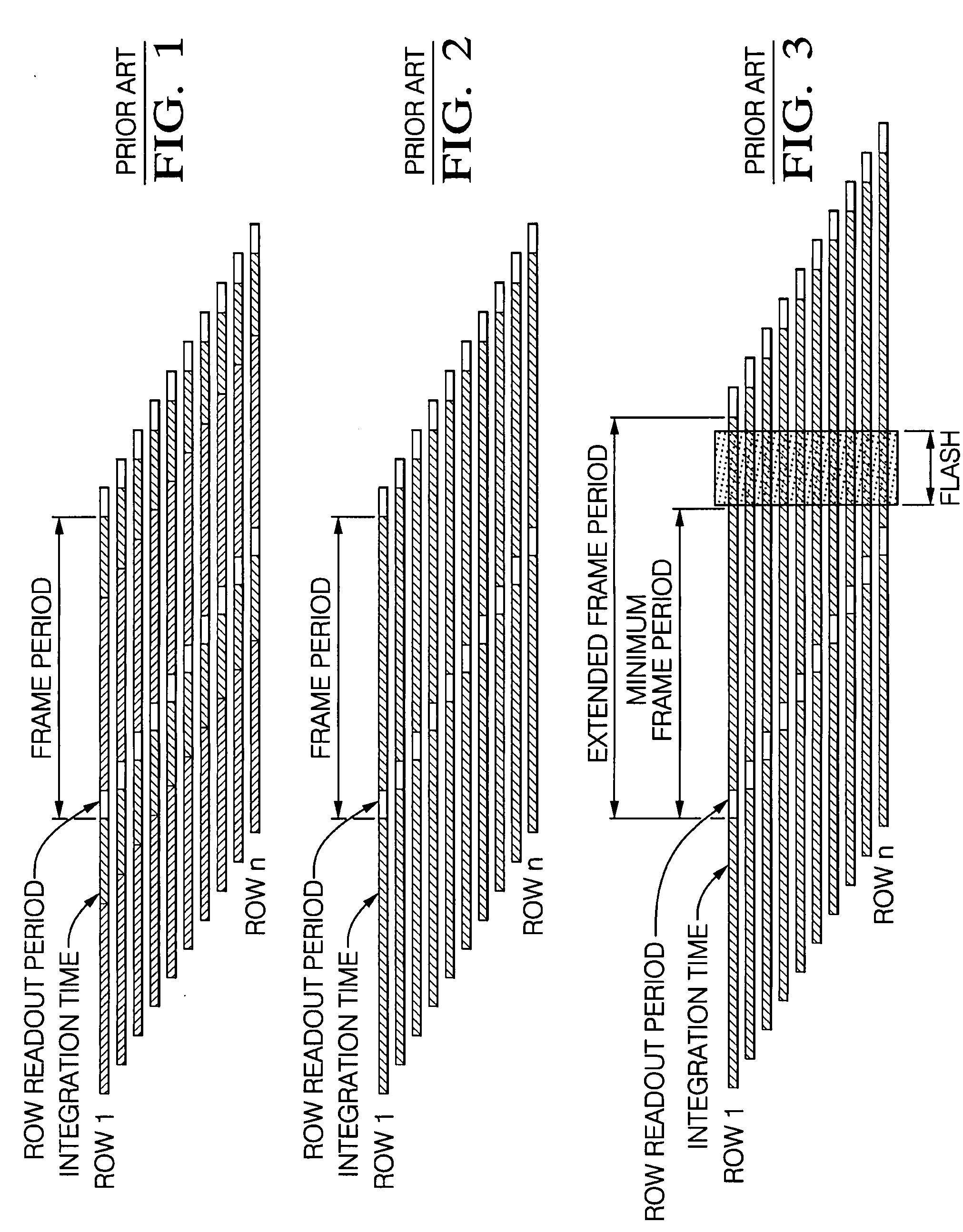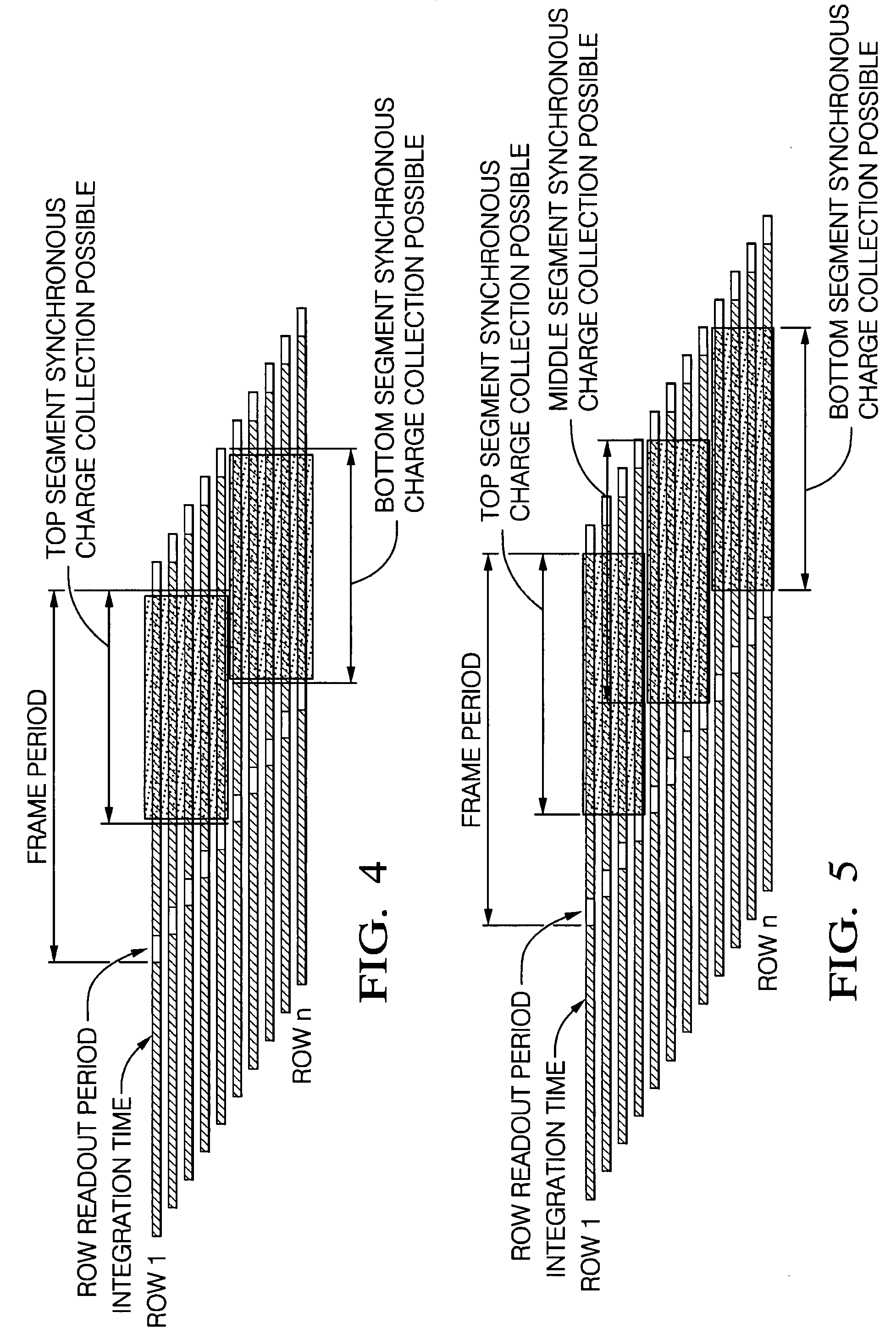Synchronous imaging using segmented illumination
a segmented illumination and imaging system technology, applied in the field of photodetectors, can solve the problems of less readily available sensors capable of detecting such wavelengths, generally more expensive than, and lower cost of these devices, so as to improve improve the sensitivity of an image sensor, and improve the effect of the performance of an active illumination imaging system
- Summary
- Abstract
- Description
- Claims
- Application Information
AI Technical Summary
Benefits of technology
Problems solved by technology
Method used
Image
Examples
Embodiment Construction
[0034]Exemplary embodiments are described with reference to specific configurations. Those of ordinary skill in the art will appreciate that various changes and modifications can be made while remaining within the scope of the appended claims. Additionally, well-known elements, devices, components, methods, process steps and the like may not be set forth in detail in order to avoid obscuring the invention. Further, unless indicated to the contrary, the numerical values set forth in the following specification and claims are approximations that may vary depending upon the desired characteristics sought to be obtained by the present invention.
[0035]A method and system are described herein for an actively illuminated imaging system. The present invention improves the illumination of a scene by synchronizing an illumination of a segment or portion of a scene when an imager is actively collecting photogenerated charge from that portion of the scene. The present invention can spatially va...
PUM
 Login to View More
Login to View More Abstract
Description
Claims
Application Information
 Login to View More
Login to View More - R&D
- Intellectual Property
- Life Sciences
- Materials
- Tech Scout
- Unparalleled Data Quality
- Higher Quality Content
- 60% Fewer Hallucinations
Browse by: Latest US Patents, China's latest patents, Technical Efficacy Thesaurus, Application Domain, Technology Topic, Popular Technical Reports.
© 2025 PatSnap. All rights reserved.Legal|Privacy policy|Modern Slavery Act Transparency Statement|Sitemap|About US| Contact US: help@patsnap.com



